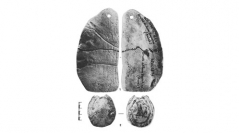

 Comptes Rendus Palevol
5 (1-2) - Pages 441-451
Comptes Rendus Palevol
5 (1-2) - Pages 441-451Neolithization through karstic territories from eastern Maghreb was in tandem with an initial form of pastoralism between 7500–5000 cal BP (ca 7855–6859 cal BP and 5471–4414 cal BP). Development and scattering of social organization was linked with development of the ‘status of the shepherd’. The cultural context in which expanded this way of life was an Atlasic Neolithic with a Capsian tradition. Evolved Mechtoids and Proto-Mediterranean represented mixed shepherd communities. During their winter settlements in hilly terrain and lowland saline areas, shepherds started to exchange goods with peddling nomadic people. Polished stone axes and adzes and marine shell ornaments, coveted by the shepherds, were exchanged against flock meat/animal goods. The impact of foreign artefacts visibly documents a new behaviour and acculturation.
Pastoralism, neolithization, behaviour, mixed communities, polished stone axes and adzes, exchange, atlasic pastoral society, Maghreb